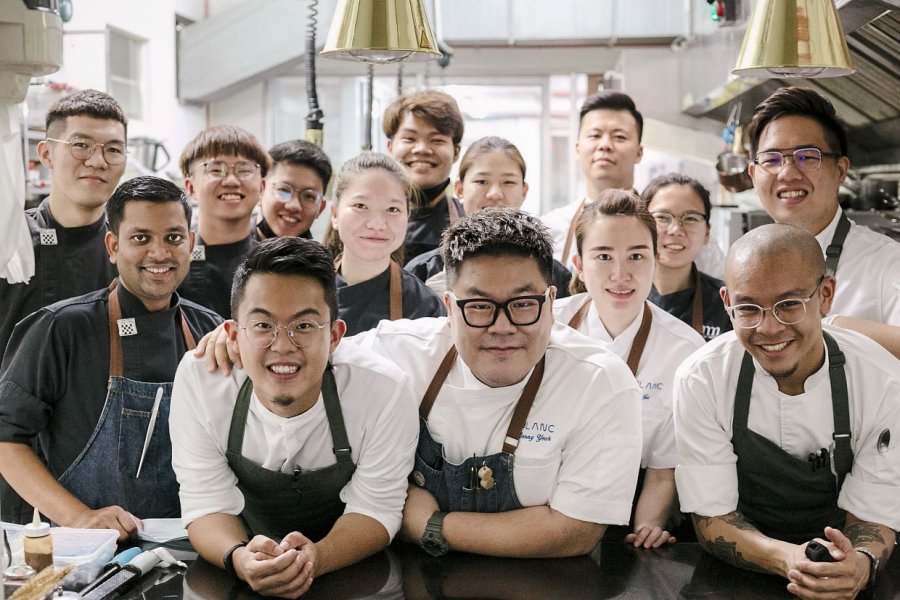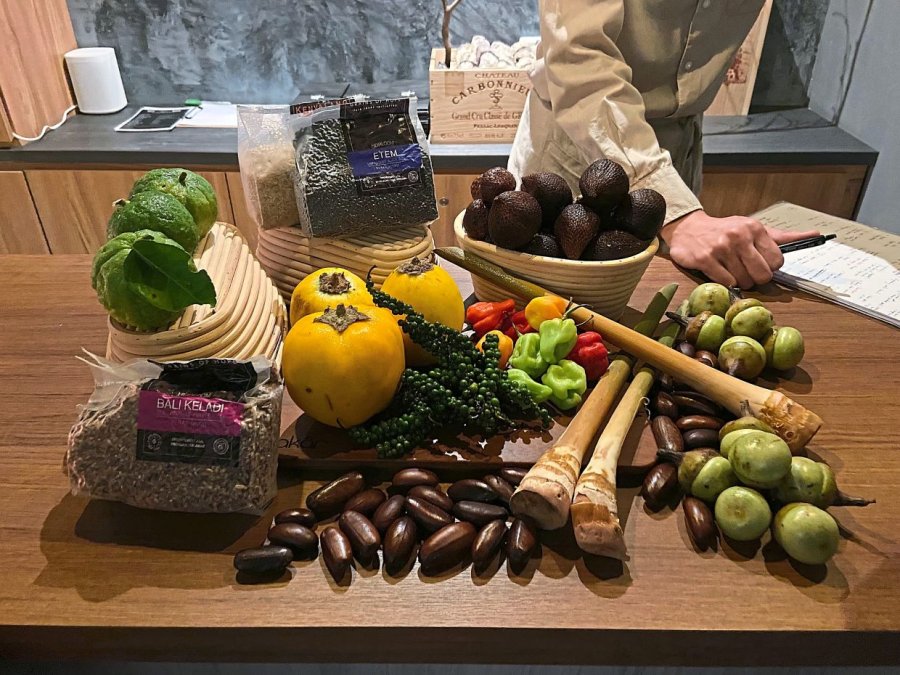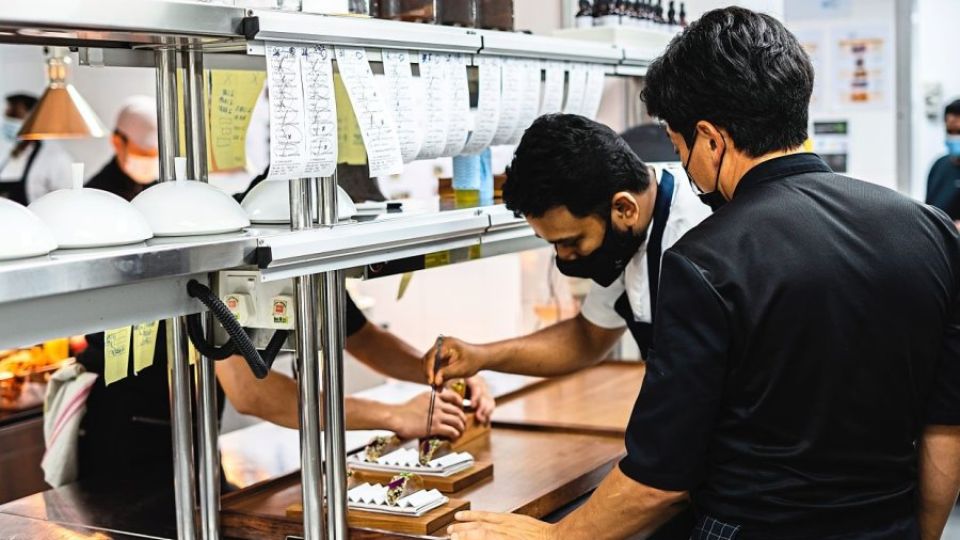December 9, 2022
KUALA LUMPUR – In the past few months, the dining scene in Malaysia has been privy to a large number of collaborative dinners, often termed four-hands or six-hands dinners. These are dinners that showcase the collective talents of at least two different chefs from different restaurants who come together and put up a menu that reflects their combined culinary skills.
Culinary crossovers are not new. In fact, top chefs around the world have been doing this for years, often travelling to different parts of the globe for collaborations. Even in Malaysia, collaborative dinners have been around for awhile and before the Covid-19 pandemic, were a starry feature of the local dining scene.
Now that restaurants are fully operational and lockdowns are (hopefully) a thing of the past, this collaborative spirit seems to have been fully re-awakened. Part of this has to do with food events like the homegrown Kita Food Festival (now in its second edition), which has been running for the past few months in Langkawi, Penang and Kuala Lumpur.

When doing collaborative dinners, chefs have to get used to working with each other in a shared kitchen. — KITA FOOD FESTIVAL
One of the main highlights of the festival is collaborative dinners which pair gifted local chefs and chefs based in Malaysia with international chefs from the region.
Another reason for this surge in collaborative dinners? Chefs haven’t been able to fully flex their creative muscles for the past few years and diners have been bored out of their minds eating the same-old fare with no opportunity for anything new and shiny. Collaborative dinners are consequently a way to inject something new into something old.
“I think the rising number of collaborative dinners is because of the pandemic. Everyone was so pent up and diners probably tried the food at most restaurants when everyone couldn’t travel during the lockdowns. So what is the freshest way to inject new inspiration into the food scene? Collaborative dinners!” says Jun Wong, a seasoned chef who will be helming soon-to-be-opened eatery Yellow Fin Horse (an ingredient-driven restaurant) at the trendy Else Hotel.
Jun is a collaborative dinner veteran of sorts who has done at least 10 of these dinners in the past few years. This year, even though she doesn’t yet have a restaurant to lead, she collaborated on a six-hands dinner with local culinary talent Leong Chee Mun of Raw Kitchen Hall and Christian Encina of Bali-based eatery Pica, as part of Kita.
Jun’s views are echoed by Aidan Low, the chef-owner of Akar Dining, a restaurant that thrives on modern interpretations of food.
According to Low, in the past year alone, he has already done seven collaborative dinners – and counting!
So just how do chefs get the ball rolling on collaborative dinners?

Jun says that as her restaurant hasn’t opened yet, participating in four-hands and six-hands dinners gives her team motivation and a sense of purpose. — ELSE KL
Getting started
For many chefs, the first step to putting together a collaborative dinner is to rope in other chefs that they consider industry friends – perhaps people they have an easy relationship with or could work together well with. Alternatively, some chefs also seek out culinary talents that they don’t know personally but whom they feel are inspiring or whose culinary output would mesh well together.
If a collaborative dinner is organised by a third-party event organiser, this entity will often look at pairing individuals that share a bond or have a cooking DNA that would either meld well together or would be interesting when matched up.

Chefs often have a series of virtual discussions to decide what is going to go on the menu for the collaborative dinner. — KITA FOOD FESTIVAL
Once a pairing is determined, then the hard work begins! Over a period of months – or sometimes weeks – these vastly different chefs will have to liaise with each other to pull together a dinner that they are both proud of and that diners will be interested in coming for.
“It’s a lot of brainstorming and video calls to understand the availability of resources – from equipment, ingredients, restaurant capacity and more. After understanding what we’re respectively looking for, we agree on a menu based on our strengths,” says Masashi Horiuchi, the seasoned Japanese chef behind acclaimed eatery, Entier French Dining, who has done a handful of collaborative dinners in KL.
According to Jun, most chefs typically speak the same language (read: food speak) so often everything can be done remotely as chefs may not have the time or opportunity to do site visits or in-person discussions with other chefs. This is something that is especially the case if the other chef involved does not reside in the same country and is flying in for the collaboration.

Horiuchi has participated in a handful of collaborative dinners and says they are great for learning new techniques, skills and food cultures. — PLATFORM HOSPITALITY
“We run our own establishments and don’t always have the time to visit other people’s kitchens for a collab. So most of the time, it is done pretty remotely so maybe we start a group chat or jump on a call together. We can also share menu ideas on online documents like Google Doc and bounce off ideas,” says Jun.
Working together and sharing space in a restaurant kitchen can also be an entirely alien concept for chefs used to running their own kitchens with their teams. This is especially the situation with guest chefs who are being hosted in kitchens they are entirely unfamiliar with.
“Most of the time, when you are in a foreign kitchen, you don’t know where basic things like spoons or whisks are, so we usually like to limit the amount of finishing that we need to do in these kitchens, so in that sense, we limit our chances of being unprepared,” says Jun.
Why do chefs do these dinners?
Collaborative dinners typically do not make much money, as most chefs can vouch for. The reasons for this are manifold – chefs need to be paid for their time and their team’s time, which can eat into profits. Often, the cost of ingredients for these meals are high as are the associated costs of flying in and accommodating foreign chefs.
If a third party organiser puts together a collaborative event, they often take a commission. So more often than not, these are not events that are lucrative, by any stretch of the imagination.

Low (extreme left, leaning against table) believes that collaborative dinners are great for reconnecting with others in the industry and sharing thoughts and ideas on food. On his right is chef Benny Yeoh from Restaurant Blanc in Penang when the two had a collaborative dinner. — AKAR DINING
So why do chefs continue to put together collaborative dinners? Well, for chefs like Jun who are about to launch a new restaurant, being involved in collaborative dinners can help the eatery gain traction and give the team something to be excited about.
“The benefit is we keep ourselves active in the market and on the radar and our team is geared and ready for service, otherwise they can be out of touch by the time the restaurant opens. Doing outside events or guest shifts keeps the team on their toes and in the zone,” she says.
Jun also adds that for established restaurants, there is the added benefit of chefs being able to deviate from the culinary blueprint that is typically encoded in an eatery. A fine-dining restaurant for example, might be able to pull off something more casual than they are typically used to doing.
“A restaurant is tied in to identity and branding, so the food has to reflect a certain DNA and pathway and you cannot veer too much away from it. But when you do a collaboration, your hands are not tied – you have a blank canvas. So it is something refreshing for the team to do,” she says.

Low was inspired by the wealth of indigenous produce in Sarawak when he did a collaborative dinner there. — AKAR DINING
For others, a collaborative dinner can be life-changing in the sense of inspiring a chef to such a degree that they incorporate new ingredients into their menus. For Low, this happened when he collaborated with a restaurant in Sarawak and had the chance to work with indigenous produce of the land. Since then, he has endeavoured to incorporate these ingredients onto his menu at Akar.
“The terroir was eye-opening because it was my first time to Sarawak and the flora and fauna there really affected me in terms of what to put on the menu. Even now, I use ingredients like engkabang oil and terung asam in some of my dishes,” he says.

Low’s menu now includes this fish dish, which incorporates terung asam, an ingredient he learnt about during one of his collaborative dinners with a chef from Sarawak. — AKAR DINING
Horiuchi meanwhile says that an exchange of cultures and ideas can also spawn new understanding of food history and culinary identity.
“When I did a collaborative dinner with progressive south Indian restaurant Nadodi, it was interesting to learn that South Indian cuisine can match with French culinary techniques. In fact, there are deep French roots in Pondicherry, India, where the chef I collaborated with is from.
“That night, French and Indian ingredients and techniques came together in a true amalgamation of East and West. Learning about their complex use of spices was eye-opening for me,” he says.
Creating community spirit
Ultimately though, for many chefs, collaborative dinners are tied in to a sense of community. During the Covid-19 pandemic, many chefs were completely disassociated from each other with little opportunity to interact through dinners such as these. Now that these opportunities are back on the table, chefs are enjoying the sense of community these dinners instill.
“It helps to build community between all the chefs and helps with the connection. We usually don’t talk to each other, so we need this kind of thing to boost the momentum in the industry.

Johnson (right) is extremely selective about which chef and restaurants he partners with for collaborative dinners as he wants the meals to mean something to his team and to diners as well. On his left is Martin, whom he paired up with for a four-hands dinner.
“Also I think festivals like Kita are a very good initiative to promote Malaysian chefs and restaurants to Malaysians and even people outside the country,” says Johnson Wong who helms acclaimed Penang eatery Gen.
Wong recently did a four-hands dinner with Andrew Martin of the one-Michelin Thai starred eatery 80:20, as part of the Kita Food Festival.
So should more chefs be doing this? Most chefs believe these collaborative dinners should definitely continue, in order to bolster the culinary community in Malaysia.
“Oh yes, it’s a great way to learn about other skills, techniques, cultures, even just the traits and quirks of another fellow chef. It’s always insightful to learn the background and philosophies of other chefs as well,” says Horiuchi.
Jun though says that while collaborative dinners are great, chefs should be mindful that their own restaurants take precedence, so having some sort of balance is crucial.
“I think there is a benefit to it but at the end of the day, our focus is our own establishment so we cannot have too much of these dinners that will distract us or require too much of our attention away from the restaurant. So it’s about striking a balance – so I would say yes to collabs but not too much but don’t do away with it entirely because then it gets too boring,” she says.
Johnson meanwhile says he has gone against the grain and actually reduced the number of collaborative dinners he takes on at Gen. So when he does embark on a collaborative dinner, he says it is because it has been curated with care and thought out in its entirety, because ultimately for him, there has to be a purpose behind the pairing.
“For me, now we do it if it is something we feel would help the restaurant and the team to learn something. So we are quite selective about which restaurants and chefs we work with – we want to work with people who can help us bring a completely new experience to diners. So it’s not just about bringing a chef and having a dinner – we want something more meaningful,” he says.


